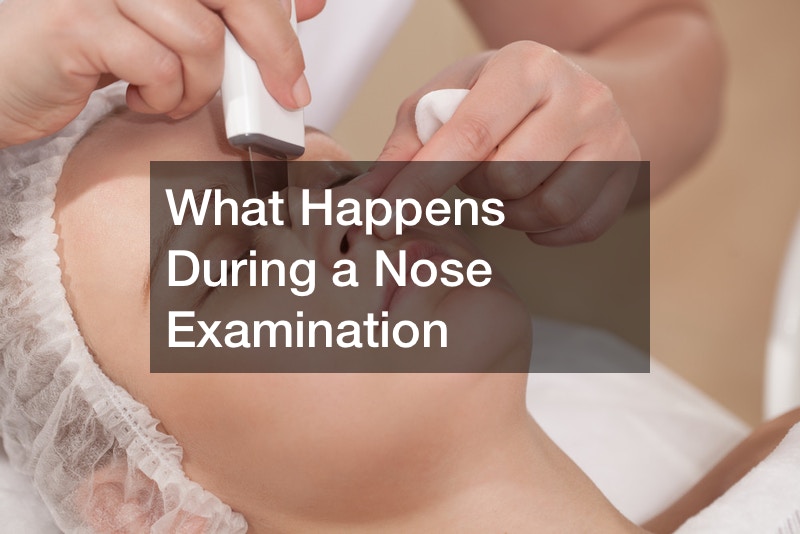
This part of the nose examination is the palpation inspection. You accomplish this by running your hand along the nose’s dorsum, looking for any irregularities in the bone, and determining how much support the tip has.
Then, you can test the patient’s nostrils’ patency by covering each one with a thumb and asking them to sniff in.
We’re searching for any type of nasal obstruction or alar collapse with this exam.
A cold metal tongue depressor held underneath the patient’s nose can be used to check the patient’s nasal patency. Good nasal patency is indicated by a good misting of the tongue depressor.
The nose is examined with a thudicum speculum in the following section of the nose examination. It is held with the middle finger in front and the ring finger behind from the tip of the left hand’s index finger. For support, the thumb pressed firmly on the top. The speculum is then opened and closed by twisting the hand and applying pressure between the middle and ring fingers. The alar is gently retracted, and the septum, inferior turbinate, middle turbinate, and sometimes even the postnasal space are visible inside.
The use of a flexible nasal endoscope to examine the internal aspect of the nose, the postnasal space, and even the larynx is a common feature of the ENT evaluation. The nose must be sedated with a local anesthetic spray in each nostril before nasal endoscopy may be performed.
.

